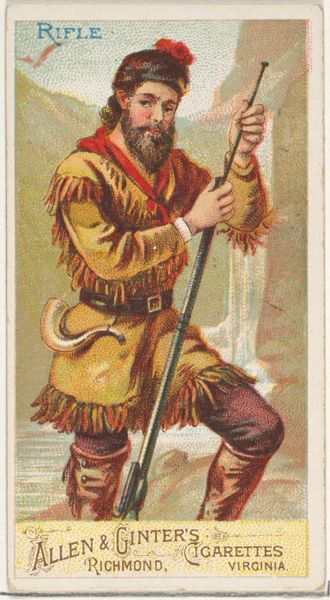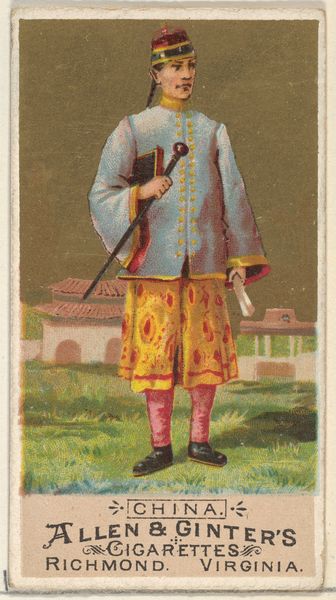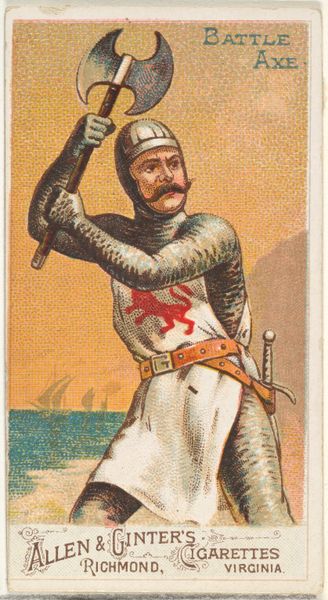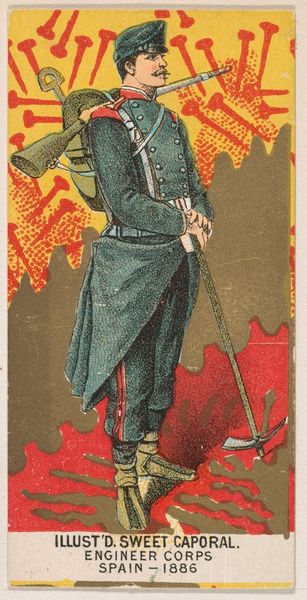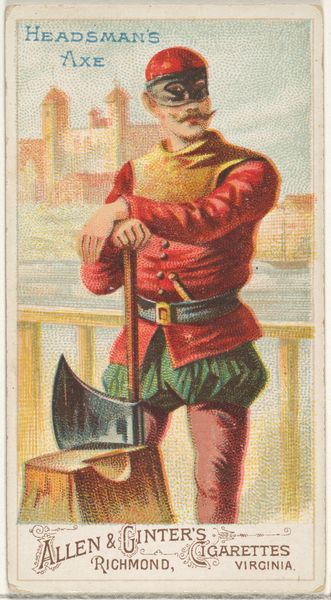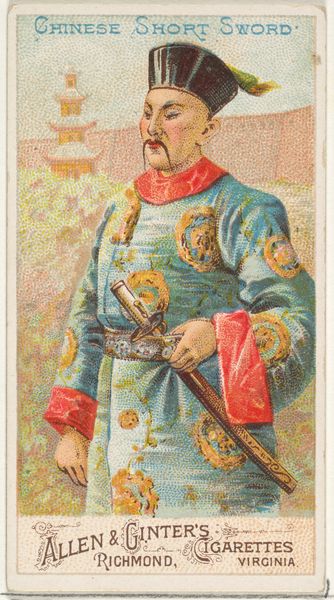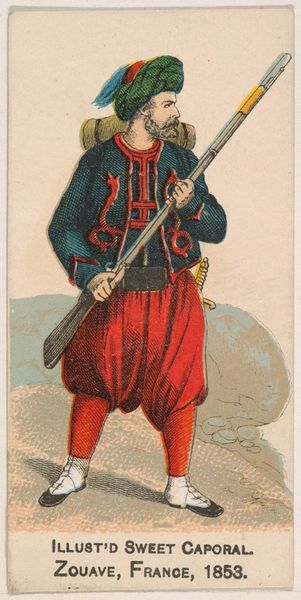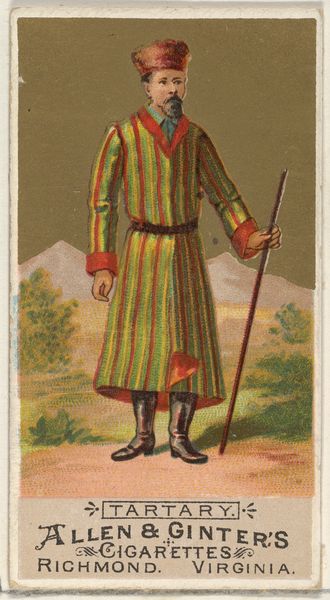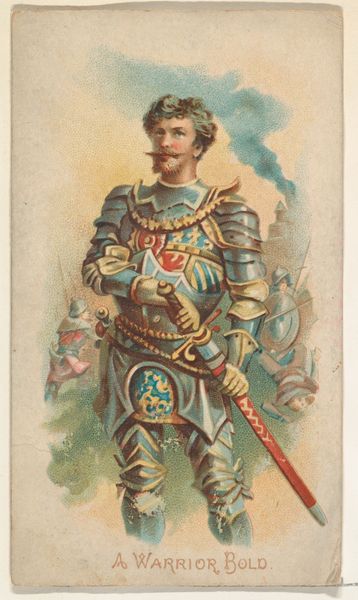
Two-handed Sword, from the Arms of All Nations series (N3) for Allen & Ginter Cigarettes Brands 1887
0:00
0:00
drawing, coloured-pencil, print
#
portrait
#
drawing
#
coloured-pencil
# print
#
caricature
#
figuration
#
11_renaissance
#
coloured pencil
#
history-painting
#
academic-art
Dimensions: Sheet: 2 3/4 x 1 1/2 in. (7 x 3.8 cm)
Copyright: Public Domain
Editor: This piece, “Two-Handed Sword” from 1887, created by Allen & Ginter for their Cigarettes Brands series, presents a color print of a Renaissance-era swordsman. The vibrant colors and somewhat theatrical pose give it a very stylized feel. What's your take on how this work connects to its cultural context? Curator: It's fascinating how this seemingly straightforward image is steeped in the social and marketing strategies of its time. Allen & Ginter was essentially crafting a brand identity. How do you think the choice of a historical figure and weapon serves their purpose? Editor: Well, I suppose a strong, heroic figure with such a prominent weapon projects a sense of power and perhaps appeals to a sense of romanticized adventure, which could attract customers. Curator: Precisely! These images were deliberately curated. Cigarette cards like these weren’t just about sales, they also helped construct a certain image of masculinity, success, and even a vision of idealized historical narrative. Think about the rise of consumer culture at the end of the 19th century, and how brands like Allen & Ginter used history painting, even a caricature of it, to elevate their products and appeal to potential consumers, thus playing with a selective and commercial vision of history. What about the sword itself? What does it represent? Editor: Symbolically, I would say it’s power and authority, definitely in a military sense. But is there more? Curator: Consider its specific historical use and how its meaning shifts when placed within the context of consumerism and advertising. It is more than just the weapon and shifts to represent the idea of smoking and therefore being an affluent male member of society. Now, thinking of its circulation, it also brings an important aspect, it becomes part of mass culture in the making! What are your thoughts on the place of this artifact, usually tossed away in the trash by the smoker, to now be displayed in an important art institution such as the Met? Editor: It definitely gives one pause to think about what we consider culturally important and how something seen as disposable can later be reevaluated and appreciated for its historical and artistic value. Curator: Absolutely, it’s a lens through which we can see the complex relationship between art, commerce, and cultural identity, challenging what we perceive as valuable and what role the art plays as cultural artifact.
Comments
No comments
Be the first to comment and join the conversation on the ultimate creative platform.
